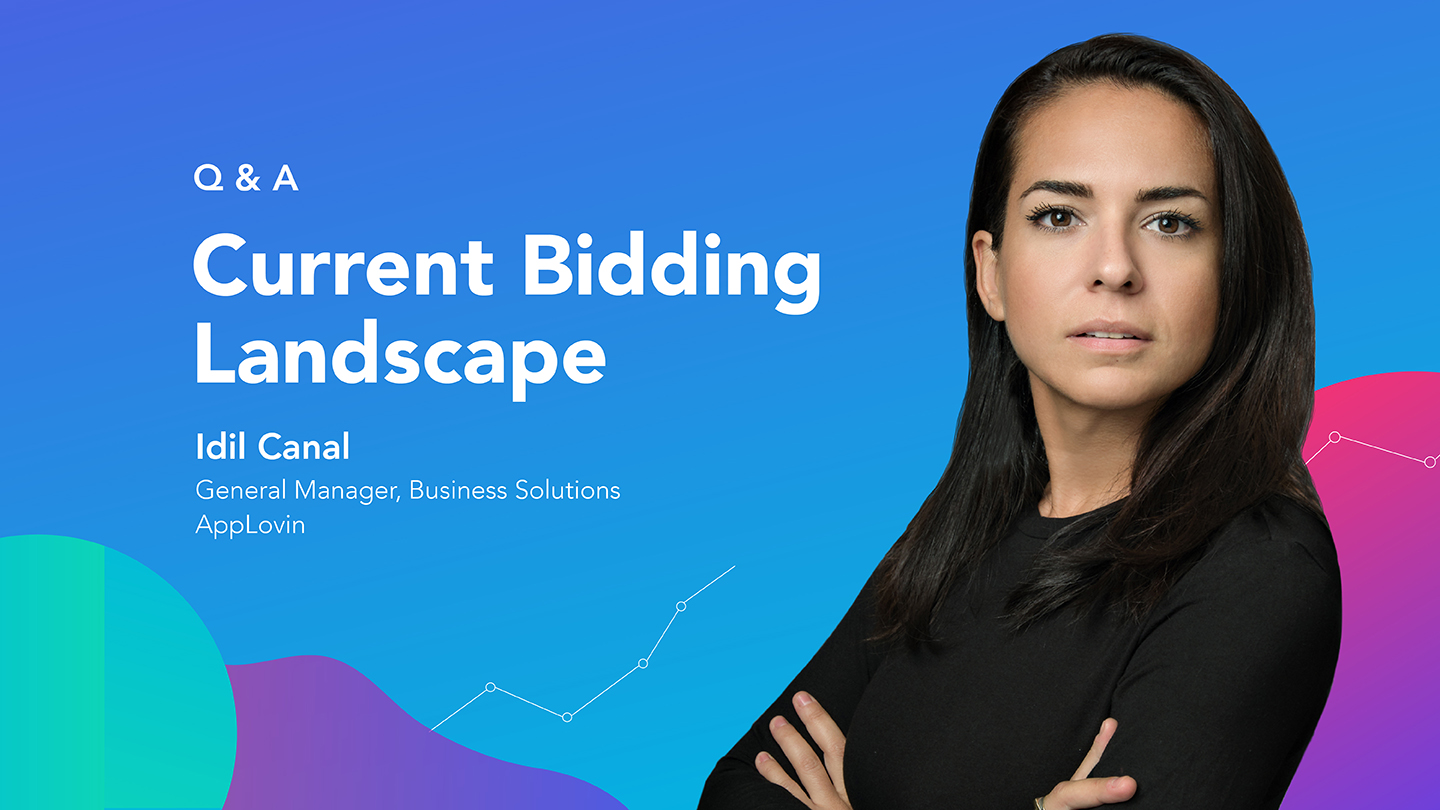In-app Bidding, Monetization
A Closer Look at How In-App Bidding Can Increase Monetization With AppLovin’s Idil Canal
Sep 27, 2021

In-app Bidding, Monetization

We looked back at some of the most-asked questions on monetization and bidding from our Ask The Developer and Connect Events and sat down with Idil Canal, our GM of Business Solutions, to go in-depth on a wide range of bidding topics.
Over the last 12 months, we’ve seen a huge increase in revenue flowing through in-app bidding. Here are some answers to perceived challenges around integration, best practices for generating higher revenue from apps, and optimization tips for developers facing real-world problems.
How are in-app bidding systems evolving the industry?
In-app bidding is rapidly changing the mobile industry and mobile publishers desperately need innovative and powerful tools to help them move from outdated products to the next era of monetization.
What are the advantages (and challenges) with in-app bidding and integrating new bidders?
In-app bidding enables developers to increase revenue with a more automated workflow and drive long-term business growth. It saves them the time and effort that could have gone toward building new apps or improving their app metrics. While moving to bidding and testing for incrementality will take time, the benefits in the mid- and long-term outweigh the cost. The most paramount challenge for app developers is that they need to stop doing things the way they used to and adapt to a new monetization approach. Many of these perceived challenges can be addressed by having a mediation partner that can offer a lot of bidders and an easy-to-integrate SDK.
With waterfall and bidding, how can you evaluate what’s working and what’s not?
The only way you can really confirm that your monetization stack is working is with A/B testing. With the right solution, you can easily clone your existing ad unit configuration to make changes. With our MAX AB Test feature, you can experiment with different ad monetization strategies using real-time data to test and measure the impact of any changes that you make to your ad unit setup. For example, you can add or remove a new network to see incrementality, a new price point, regional price floor optimizations, and identify opportunities that will maximize LTV. We also recently added the flexibility of setting custom A/B test allocation for developers to test any combination of changes with greater confidence.
Should A/B tests focus on different areas in different stages of monetization? How do we set up the monetization stack accordingly?
We recommend developers to start with a clear baseline and implement different A/B test strategies incrementally. This approach ensures that the developer can measure the impact of each change they make in their ad monetization setup. Whether it’s the refresh rate, regional bid floors, ad frequency, or simply adding a new bidder to their stack, it’s critical to measure what will truly improve your bottom line. Depending on the number of apps in your portfolio — a publishing house with weekly prototypes or a news app with two titles that have been live for several years — the key is to find the right monetization setup for your ad units and perfect that strategy. Once the strategy is defined, with in-app bidding there is little to no maintenance work required.
Does in-app bidding increase eCPM of banners?
When developers use in-app bidding and enable the right demand partners based on their geo-composition and ad formats, competition per each bid and impression opportunity increases. This increases impressions per DAU, which is due to improved ad serving times and higher CPMs driven by top mobile advertisers bidding to win the auction.
How can I increase the eCPM of bidding networks? Can I use non-bidder networks to do that?
We recommend adopting a strategy based on your geo-composition and the ad formats in your apps. Increasing the number of demand partners is always a great way to start increasing your earnings. The key is to find the right partners in the best regions that make sense for your audience and have them buy in an open auction.
What is the share of voice of bidding partners these days? Are we seeing a substantial increase?
Whether it’s a regional network or a global brand name, it’s critical that the right buyers are in the auction for each user and each impression opportunity. Momentum has increased as the top demand partners in the industry have moved exclusively to bidding. Since then, we’ve seen more publishers driving more than half of their revenue from in-app bidders on MAX. In most cases, these are fully bidded.
How can in-app bidding be optimized to become time relevant to the specific needs of users based on their real-time behavior?
In a fair environment with the right demand sources, a highly dense auction will help drive the highest price for each user and impression opportunity. With more than half of MAX’s 20+ networks already transacting in bidding, developers are seeing the ARPDAU lifts driven by the increase in competition — without the hassle of granular segmentation or custom waterfalls.
Do we adjust our monetization stacks on our own or is it automated?
MAX was built with automation in mind from day one. It is the first and only platform built for in-app bidding. Many of the features, such as ad unit creation and testing tools and APIs that provide transparency, were built for automation. As we continue transitioning more of our demand partners over to bidding, the MAX dashboard and tools make this process seamless and the developer self-sufficient. Our account teams help developers use our solutions to grow their businesses on both the monetization and growth side — but our goal is to empower our developers with automation.
To learn more about AppLovin’s MAX, please visit us here for more information.